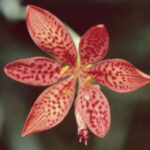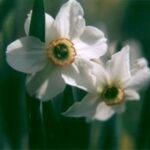Phlox is a perennial every garden should have. They are easy to grow, beautiful and they are very fragrant. There is several varieties of this perennial to choose from and all are welcome additions.
Most varieties of Phlox is hardy in USDA Zones 4 to 8, and will bloom in spring or spring through summer. There is nothing dull about Phlox and they will definitely attract attention, but they require very little of it. When everything else in my garden is fizzling out, the large fragrant Phlox flowers almost seem to glow.
Phlox is a perennial native to North America but it wasn’t cultivated here until the 1800s. It was extremely popular with Victorian gardeners and they often used it in the small nosegays called tussie-mussies. A gift of Phlox was meant to be an acknowledgment of love as well as wishing someone sweet dreams. This fragrant perennial is also popular with butterflies, bees and hummingbirds due to its sweet nectar.
One of the prized aspects of Phlox is the fragrance. Sometimes old fashioned perennial flowers lose much of the glorious scent due to hybridization, but many Phlox varieties still have their wonderful fragrance. Since there are so many Phlox species and many new hybrids, they offer a wide variety of sizes, colors and bloom times.
If the garden plan is well thought out, there can be some type of Phlox blooming in the garden throughout the entire growing season. Each variety is a perennial, so they will return to the garden year after year with their sweet fragrance.
The commonly called garden or summer Phlox (Phlox paniculata) has flower clusters on tall stems and is one of the showiest and most popular. A white cultivar called “David” reaches 3 feet in height and blooms from July to September. The pearly white blossoms seem to shine at night. Another popular variety and one of my favorite are “Bright Eyes”. This beautiful flower is pink with deep crimson centers that really stand out. The variety of Phlox called “Laura” has pink blossoms with white centers and “Franz Schubert” has gorgeous lilac and pink clusters.
The creeping Phlox (Phlox subulata) is very different from the tall variety and is sometimes called moss Phlox. This is very well known variety and is popular in rock gardens and covering difficult embankments. It only blooms in spring but it puts on quite a show for that short time. It is also very easy to grow which helps make it very popular. It spreads quickly and stays close to the ground and will carpet an area with brilliant pinks, blue, purple, lavender and white.
Wild sweet William (Phlox maculata) is the only one that prefers part to full shade making it just right for woodland gardens. It is light blue but since being hybridized it now comes in purple and white. This Phlox is considered a mid-sized perennial. There is also an annual Phlox called Phlox Drummondii and its flowers are in almost all bright and pastel shades except blue or orange.
Growing Phlox is not at all difficult. This perennial usually prefers full sun, although some will be fine in partial shade. It’s always best to check the label for the variety you are purchasing. Most Phlox needs a rich and well-drained soil but the creeping ground cover variety is a perennial that can handle dry conditions.
Plant container- grown varieties of Phlox anytime during the growing season. Space the creeping Phlox about 12 inches apart and the taller varieties about 18 to 24 inches apart. Water the newly planted perennials regularly to keep them moist during dry spells, but never keep them soggy. Once the plants have become established, they will not need as much water.
The creeping Phlox will need to be cut back about half way after blooming has stopped. This will help keep the plant full and sometimes it will even put out a few new blooms. It’s best to keep the tall garden Phlox deadheaded to keep them flowering longer. This should be a common practice with all blooming plants.
The only downside to growing the beautiful and highly fragrant Phlox is powdery mildew. The tall variety is much more susceptible to mildew. There are a couple of the newer varieties such as “David” or the “Flame” series that is more mildew-resistant. The best way to prevent mildew on Phlox is to give them plenty of room for air circulation. It’s best to plant them in an open area instead of next to a wall or structure. This will just further promote good air circulation.
I found this out the hard way with one of my favorite Phlox. It grew beautifully next to a tall house foundation for several years and then a particularly rainy season started the mildew. It is not a pretty sight and can ravage the foliage on the Phlox. They are so hardy though that several of them continued putting out their brilliant bright pink blossoms when the foliage was almost completely destroyed from mildew. If the Phlox begins getting too crowded, thin the plants to improve air circulation or just move them to a more open area. Remove the infected leaves as soon as the powdery mildew begins to try to keep it from spreading.
Deer and rabbits also like to munch on Phlox, so keep that in mind when deciding the planting location. If that becomes a problem, there are harmless repellants that will discourage snacking. There are also netting materials available that help to keep any plants from being eaten. Even with the minor problems this well loved perennial might incur, they are well worth having in the garden. No matter which size, color or variety of Phlox you choose to try, it will add color, texture, fragrance and beauty. That’s a lot to ask from any perennial!






